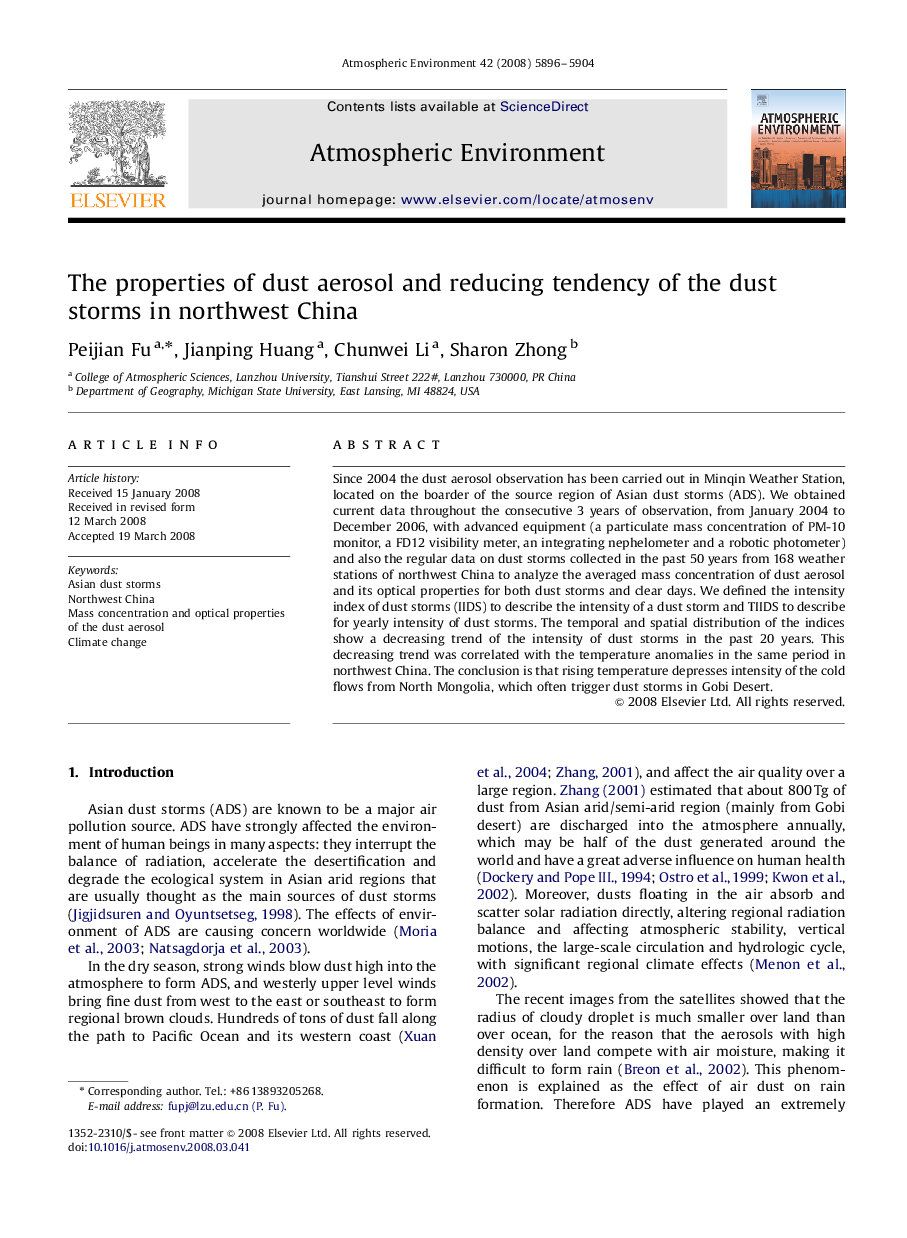| Article ID | Journal | Published Year | Pages | File Type |
|---|---|---|---|---|
| 4442675 | Atmospheric Environment | 2008 | 9 Pages |
Since 2004 the dust aerosol observation has been carried out in Minqin Weather Station, located on the boarder of the source region of Asian dust storms (ADS). We obtained current data throughout the consecutive 3 years of observation, from January 2004 to December 2006, with advanced equipment (a particulate mass concentration of PM-10 monitor, a FD12 visibility meter, an integrating nephelometer and a robotic photometer) and also the regular data on dust storms collected in the past 50 years from 168 weather stations of northwest China to analyze the averaged mass concentration of dust aerosol and its optical properties for both dust storms and clear days. We defined the intensity index of dust storms (IIDS) to describe the intensity of a dust storm and TIIDS to describe for yearly intensity of dust storms. The temporal and spatial distribution of the indices show a decreasing trend of the intensity of dust storms in the past 20 years. This decreasing trend was correlated with the temperature anomalies in the same period in northwest China. The conclusion is that rising temperature depresses intensity of the cold flows from North Mongolia, which often trigger dust storms in Gobi Desert.
